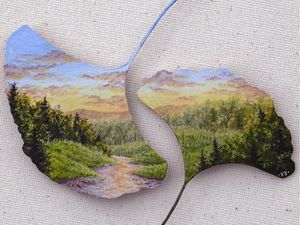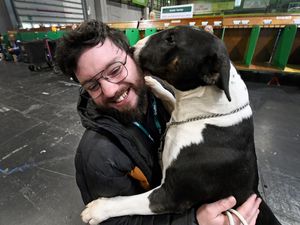These beautiful paintings drawn on found natural objects will make your jaw drop
This artist uses leaves, shells and bumblebee wings as her canvas.

We’ve all seen paintings on canvas and paper in art galleries, but this artist uses a more unconventional method, using nature to find creative art materials.
Artist Katie Brooks has gone viral for her inventive and striking paintings on the backs of leaves, shells, and even bumblebee wings.
The university student from North Carolina posted a photo of her latest leafy creation on Twitter, where it has received more than 17,000 retweets.
Brooks was first inspired to create artwork with natural objects during a summer trip three years ago. After gathering seashells on a walk, she painted them and left them along the shore for beach-goers to discover.
She said: “After working with seashells, I began to see everything as a canvas. My friends pick on me now for my habit of collecting leaves, stones, and other objects that inspire me while I’m out. You’ll rarely find me outside with empty pockets.
“The outdoors were my first love as a child, and I’ve grown deeply passionate about our natural world since then. I love the idea that I am not the sole artist behind my work, I’m just collaborating with the artistry displayed around us!”
Brooks said she is most inspired by the ginkgo biloba trees she passes close to her university, as they are a good shape for painting.
She said: “It’s difficult to narrow down to a favourite piece, but I am quite attached to my ginkgo leaf paintings, especially the first one I created.
“These leaves came from the giant ginkgo tree I pass on my way to class. Each autumn, it buries the ground around the tree under a layer of golden leaves. I had never seen them until then, and I’m fascinated by their shape and colour!”
Brooks dries and presses leaves and layers with strengthening acrylic primer before painting them, and uses acrylic sealant afterwards to protect the paint.
She said: “Painting on unusual surfaces is a rewarding challenge, but certainly comes only through trial and error.
“I’ve found it works best when a leaf is thoroughly dried and pressed prior to painting. I’ve made a simple wooden leaf press for the job, but a heavy book works well in a pinch… I’ve torn quite a few leaves in working this process out!”
Brooks said: “‘Going viral’ is a very strange experience for sure. My painted bee sure received a wide variety of responses. Some loved it, others hated it, and some just thought I was crazy.
“I found the poor bee in my uncle’s backyard while visiting. Although sad that he had passed on, I was intrigued to be able to examine him so closely. I had just finished a course in biological illustration, so I was still excited to have found a ‘specimen’ on my own.
“The best part of this experience is the other artists I’ve discovered through these posts. Community is one of the best aspects of social media, and I’m so grateful to have found it here in the art world.”





